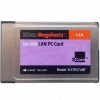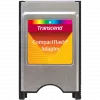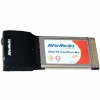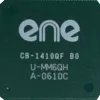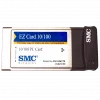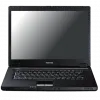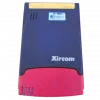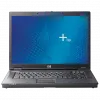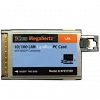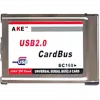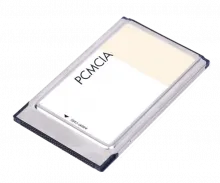
The PCMCIA 1.0 card standard was published by the Personal Computer Memory Card International Association in November 1990 and was soon adopted by more than eighty vendors. It corresponds with the Japanese JEIDA memory card 4.0 standard.
SanDisk (operating at the time as "SunDisk") launched its PCMCIA card in October 1992. The company was the first to introduce a writeable Flash RAM card for the HP 95LX (the first MS-DOS pocket computer). These cards conformed to a supplemental PCMCIA-ATA standard that allowed them to appear as more conventional IDE hard drives to the 95LX or a PC. This had the advantage of raising the upper limit on capacity to the full 32M available under DOS 3.22 on the 95LX.
Type II PC Card: IBM V.34 data/fax modem, manufactured by TDK
It soon became clear that the PCMCIA card standard needed expansion to support "smart" I/O cards to address the emerging need for fax, modem, LAN, harddisk and floppy disk cards. It also needed interrupt facilities and hot plugging, which required the definition of new BIOS and operating system interfaces.This led to the introduction of release 2.0 of the PCMCIA standard and JEIDA 4.1 in September 1991, which saw corrections and expansion with Card Services (CS) in the PCMCIA 2.1 standard in November 1992.
Many notebooks in the 1990s had two adjacent type-II slots, which allowed installation of two type-II cards or one, double-thickness, type-III card. The cards were also used in early digital SLR cameras, such as the Kodak DCS 300 series. However, their original use as storage expansion is no longer common.
The PC Card port has been superseded by the ExpressCard interface since 2003, though some manufacturers such as Dell continued to offer them into 2012 on their ruggedized XFR notebooks.
As of 2013, some vehicles from Honda equipped with a navigation system still included a PC Card reader integrated into the audio system.
Some Japanese brand consumer entertainment devices such as TV sets include a PC Card slot for playback of media

